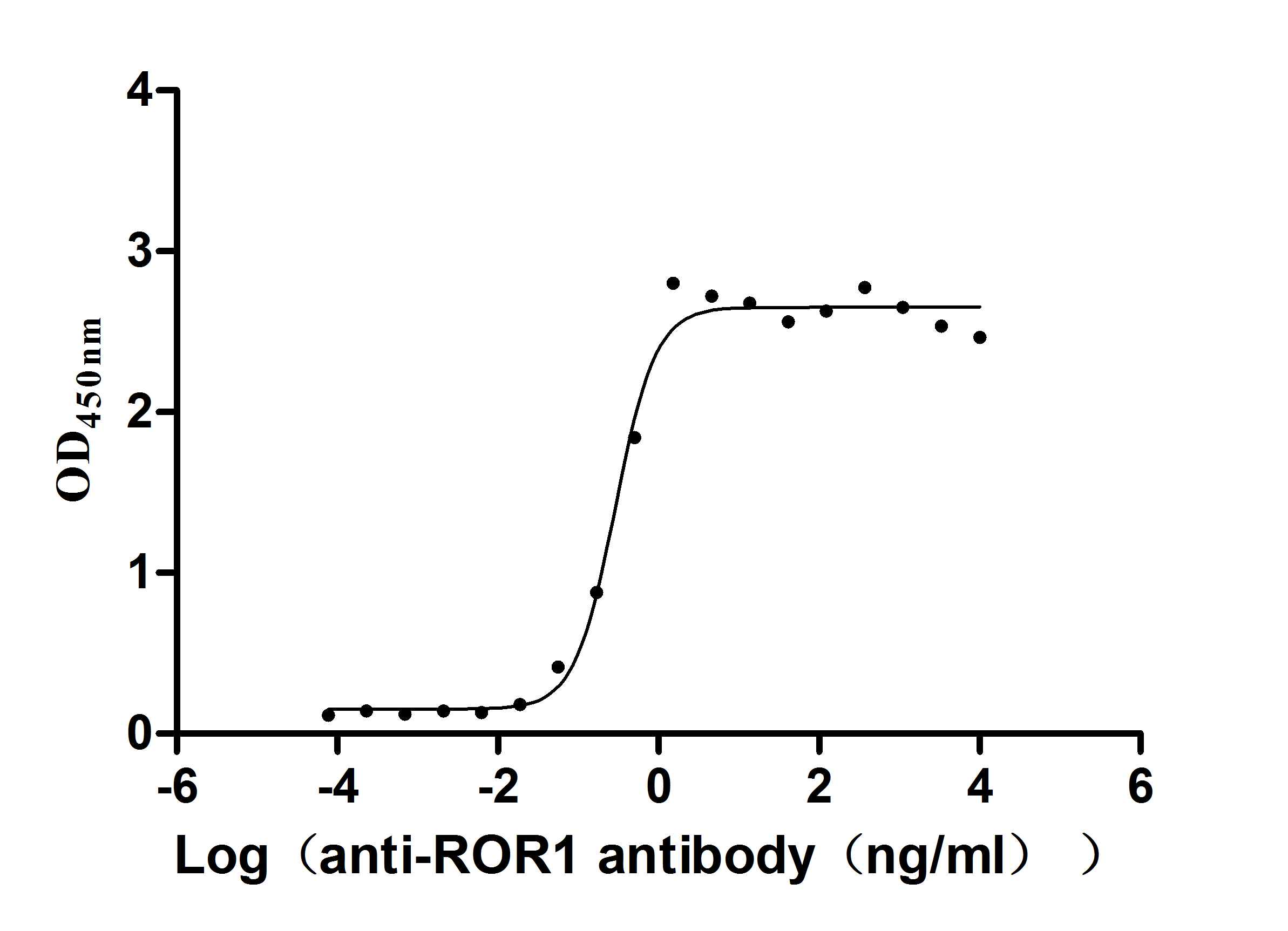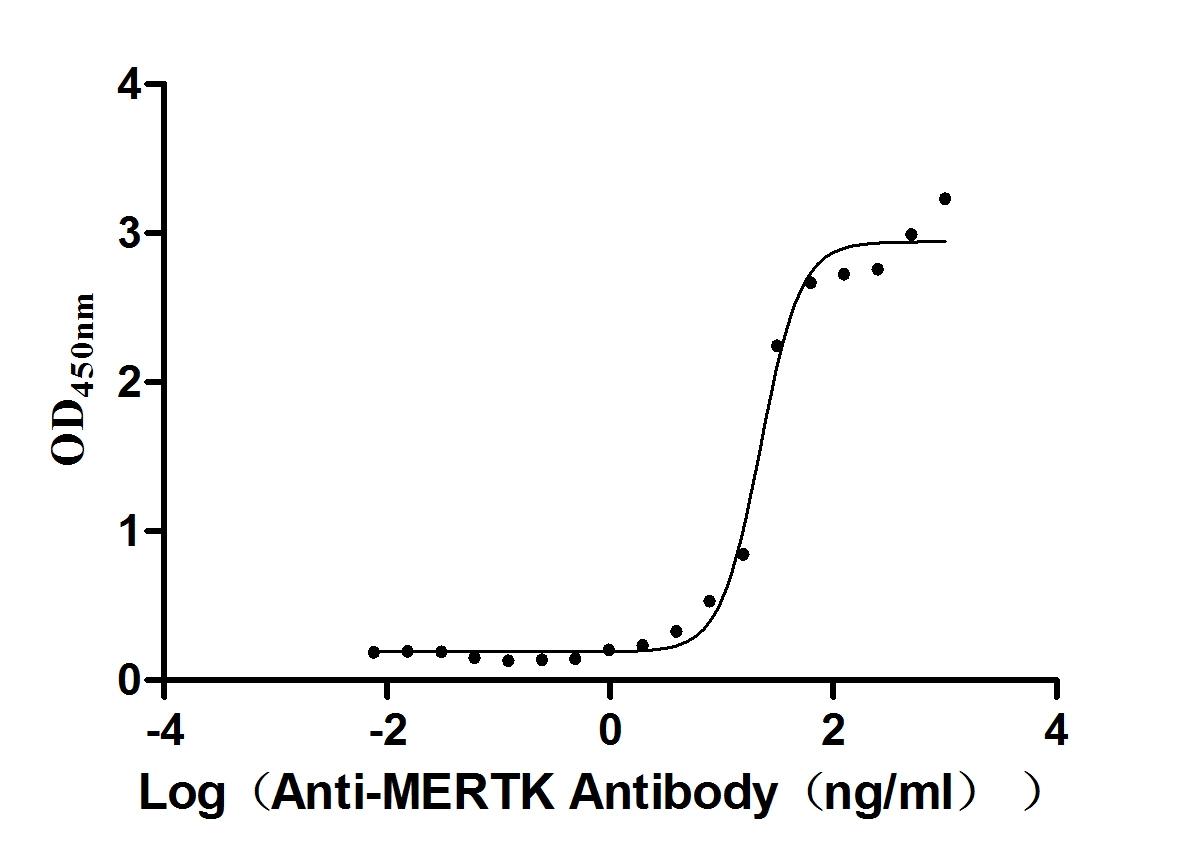Recombinant Mouse Zinc transporter ZIP14 (Slc39a14), partial
-
中文名称:小鼠Slc39a14重组蛋白
-
货号:CSB-YP748446MO1
-
规格:
-
来源:Yeast
-
其他:
-
中文名称:小鼠Slc39a14重组蛋白
-
货号:CSB-EP748446MO1
-
规格:
-
来源:E.coli
-
其他:
-
中文名称:小鼠Slc39a14重组蛋白
-
货号:CSB-EP748446MO1-B
-
规格:
-
来源:E.coli
-
共轭:Avi-tag Biotinylated
E. coli biotin ligase (BirA) is highly specific in covalently attaching biotin to the 15 amino acid AviTag peptide. This recombinant protein was biotinylated in vivo by AviTag-BirA technology, which method is BriA catalyzes amide linkage between the biotin and the specific lysine of the AviTag.
-
其他:
-
中文名称:小鼠Slc39a14重组蛋白
-
货号:CSB-BP748446MO1
-
规格:
-
来源:Baculovirus
-
其他:
-
中文名称:小鼠Slc39a14重组蛋白
-
货号:CSB-MP748446MO1
-
规格:
-
来源:Mammalian cell
-
其他:
产品详情
-
纯度:>85% (SDS-PAGE)
-
基因名:Slc39a14
-
Uniprot No.:
-
别名:Slc39a14; Fad123; Kiaa0062; Zip14; Metal cation symporter ZIP14; Factor for adipocyte differentiation 123; FAD-123; Solute carrier family 39 member 14; Zrt- and Irt-like protein 14; ZIP-14
-
种属:Mus musculus (Mouse)
-
蛋白长度:Partial
-
蛋白标签:Tag type will be determined during the manufacturing process.
The tag type will be determined during production process. If you have specified tag type, please tell us and we will develop the specified tag preferentially. -
产品提供形式:Lyophilized powder
Note: We will preferentially ship the format that we have in stock, however, if you have any special requirement for the format, please remark your requirement when placing the order, we will prepare according to your demand. -
复溶:We recommend that this vial be briefly centrifuged prior to opening to bring the contents to the bottom. Please reconstitute protein in deionized sterile water to a concentration of 0.1-1.0 mg/mL.We recommend to add 5-50% of glycerol (final concentration) and aliquot for long-term storage at -20℃/-80℃. Our default final concentration of glycerol is 50%. Customers could use it as reference.
-
储存条件:Store at -20°C/-80°C upon receipt, aliquoting is necessary for mutiple use. Avoid repeated freeze-thaw cycles.
-
保质期:The shelf life is related to many factors, storage state, buffer ingredients, storage temperature and the stability of the protein itself.
Generally, the shelf life of liquid form is 6 months at -20°C/-80°C. The shelf life of lyophilized form is 12 months at -20°C/-80°C. -
货期:Delivery time may differ from different purchasing way or location, please kindly consult your local distributors for specific delivery time.Note: All of our proteins are default shipped with normal blue ice packs, if you request to ship with dry ice, please communicate with us in advance and extra fees will be charged.
-
注意事项:Repeated freezing and thawing is not recommended. Store working aliquots at 4°C for up to one week.
-
Datasheet :Please contact us to get it.
相关产品
靶点详情
-
功能:Electroneutral transporter of the plasma membrane mediating the cellular uptake of the divalent metal cations zinc, manganese and iron that are important for tissue homeostasis, metabolism, development and immunity. Functions as an energy-dependent symporter, transporting through the membranes an electroneutral complex composed of a divalent metal cation and two bicarbonate anions. Beside these endogenous cellular substrates, can also import cadmium a non-essential metal which is cytotoxic and carcinogenic. Controls the cellular uptake by the in...显示更多
-
基因功能参考文献:
- This study concludes that SLC39A14 is essential for efficient Mn uptake by the liver and pancreas, and its deficiency results in impaired Mn excretion and accumulation of the metal in other tissues. PMID: 29437953
- Data indicate SLC39A14 (ZIP14) as a regulator of bone homeostasis, and that manipulating ZIP14 might be a therapeutic strategy for bone diseases. PMID: 29621230
- Zip14 activity is needed for adaptation to endoplasmic reticulum stress in liver. PMID: 28673968
- Data suggest that most if not all tissues use ZIP8 and ZIP14A/ZIP14B (alternative splicing products) for Zn(2+) uptake, some tissues under basal conditions and others more so when inflammatory stressors are present (as in endotoxemia); collectively, this might lead to substantial alterations in plasma Zn(2+) levels due to Zn(2+) redistribution not just in liver but across many vital organs. PMID: 24728862
- the inflammation-responsive zinc transporter ZIP14 has phenotypic effects that are amplified with aging PMID: 27647172
- ZIP14 is essential for manganese elimination via the gastrointestinal tract, and a lack of ZIP14 results in manganese accumulation in critical tissues such as the brain PMID: 28536273
- Intravitreal holo-transferrin injection decreased Zip 14 protein levels. These data indicate that Zip8 and Zip14 may take up increasing amounts of non-transferrin bound iron in these two mouse models of retinal iron accumulation. PMID: 28057442
- ZIP14-mediated zinc transport contributes to regulation of endosomal insulin receptor activity and glucose homeostasis in hepatocytes. PMID: 27703010
- Results suggest that aberrant zinc distribution observed with Zip14 ablation impacts adipose cytokine production and metabolism, ultimately increasing fat deposition when exposed to endotoxin. PMID: 26646099
- Slc39a14 deficiency in hemochromatotic mice greatly diminished iron loading of the liver and prevented iron deposition in hepatocytes and pancreatic acinar cells. PMID: 26028554
- PrP(C) promotes, and possibly regulates, the uptake of iron through DMT1 and Zip14 via its ferrireductase activity. PMID: 25862412
- Zinc transporter ZIP14 influences aspects of the pathophysiology of nonlethal polymicrobial murine sepsis induced by cecal ligation/puncture through zinc delivery. PMID: 26272258
- Oral cadmium chloride administration to ZIP14 knockout mice results in time dependent changes in gene expression. PMID: 25294218
- ZIP14 is a basolaterally localized protein in enterocytes and is involved in endosomal trafficking of zinc and is necessary for proper maintenance of intestinal tight junctions PMID: 25428902
- Hepatic ZIP14 protein levels are upregulated in iron-loaded hypotransferrinemic mice. PMID: 23349308
- We ligated mouse ZIP14A, ZIP14B and ZIP8 cDNA coding regions into the Xenopus-specific vector pXFRM, transcribed these in vitro, and microinjected the capped RNAs into Xenopus oocytes. K(m) and V(max) values for Cd, Zn and Fe uptake were determined. PMID: 23090441
- Zip14 expression induced by lipopolysaccharides in macrophages attenuates inflammatory response PMID: 23052185
- The knockdown of ZIP8, ZIP14 or DMT1 by siRNA transfection significantly reduced the uptake of Cd(2+) and Mn(2+) from the apical membrane. PMID: 22534978
- This study found that Zip14 is capable of mediating cellular uptake of nontransferrin-bound iron characteristic of iron-overload conditions. PMID: 21653899
- data highlight SLC39A14 as an important novel player in GPCR-mediated signaling PMID: 21445361
- These results suggest that endosomal ZIP14 participates in the cellular assimilation of iron from transferrin, thus identifying a potentially new role for ZIP14 in iron metabolism. PMID: 20682781
- SLC39A14 plays a role as a zinc transporter during the early stages of adipogenesis PMID: 15794747
- Zip14 expression is up-regulated through IL-6 PMID: 15863613
- Zip14 can mediate the uptake of zinc and non-transferrin-bound iron into cells. PMID: 16950869
- The present study provides the complete characterization of Slc39a14 gene and its ZIP14 mRNAs and proteins and for the first time demonstrates the significance of ZIP14 in Cd2+-mediated cell damage. PMID: 18270315
- These results suggest that signaling pathways activated by nitric oxide are factors in the upregulation of Zip14, which in turn mediates hepatic zinc accumulation and hypozincemia during inflammation and sepsis. PMID: 19179618
收起更多
-
亚细胞定位:Cell membrane; Multi-pass membrane protein. Apical cell membrane; Multi-pass membrane protein. Basolateral cell membrane; Multi-pass membrane protein. Early endosome membrane; Multi-pass membrane protein. Late endosome membrane; Multi-pass membrane protein. Lysosome membrane; Multi-pass membrane protein.
-
蛋白家族:ZIP transporter (TC 2.A.5) family
-
组织特异性:Widely expressed. Highly and transiently expressed during the early stage of adipocyte differentiation. Strongly expressed in liver, preadipocyte, duodenum and jejunum, moderately in brain, heart, skeletal muscle, spleen, pancreas, kidney and white adipos
-
数据库链接:
KEGG: mmu:213053
STRING: 10090.ENSMUSP00000022688
UniGene: Mm.270647





-AC1.jpg)














